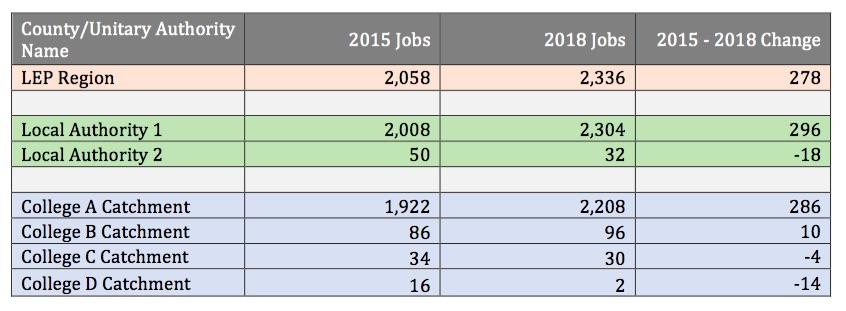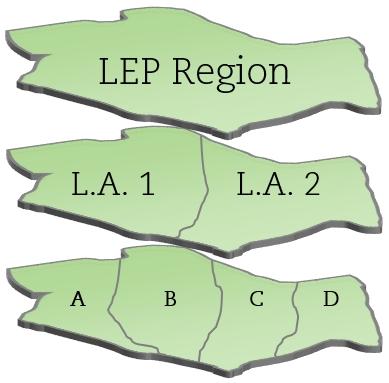Area reviews? Which area?

The announcement in July by the Department for Business, Innovation and Skills (Bis) that the Government is to set up area reviews will have come out of the blue for many, and the pledge to begin these in September may have made many in the sector more than a little nervy.
However, since the announcement in Reviewing Post-16 Education and Training Institutions, colleges will hopefully have had a good chance to think about how they might approach the reviews, with something of a tentative plan forming whilst they await further details from Bis.
Given that the major focus of the reviews will be on “responsiveness to local employer needs and economic priorities”, there are a couple of vital steps that colleges should be giving serious consideration to.
- Colleges should be able to articulate to their steering group the value they already provide to a variety of stakeholders, including learners, employers and the local area in general.
- Colleges need to show that they have taken steps to understand the needs of their local labour market and that they are responding adequately to those needs.
Colleges that arm themselves with tangible figures on their economic impact and who can show that they understand and are responding to the needs of their local labour market are likely to be the most successful in persuading their steering group that they are “responsive to local employer needs and economic priorities”.
Since that piece appeared, we have had a good many conversations with principals around the country and one of the themes that seems to be cropping up is something that at first glance may appear to be a simple question, but nonetheless it is one that is fundamental to this whole process. The question is this: Which area are we going to be measured by?
This is something we touched upon in another piece, this time for the LEP Network. Since LEPs will be playing perhaps the major role in the steering groups, it is probable that the areas covered will be defined by them, but in our piece we very much cautioned against the assumption that economic priorities and needs will be the same for all colleges throughout a LEP region. In order to understand why, we gave the following illustration:
Imagine a LEP region which covers two Local Authorities and which contains four colleges, A, B, C and D (see map). Let’s say that within the region as a whole, there is a large aerospace industry, which employs over 2,000 people. However, the industry is located entirely in Local Authority 1 and, even more specifically, exclusively within the catchment area of college A.
Given this, we might find that employment in the industry looks something like this:

For the LEP Region as a whole, the industry is a big employer and so clearly a high priority. However, this is by no means the story across the region as a whole. Both current employment and expected growth are found almost entirely within the catchment area of College A, whilst the other three catchment areas not only employ very few people in the industry, but in the case of C and D are expected to see decline over the next few years.
In this scenario, it is clear that the LEP has a responsibility to ensure that the needs of the aerospace industry in the region as a whole are met. However, it is equally clear that the responsibility for meeting this demand lies almost exclusively with College A. Colleges B, C and D, by contrast, not only have little or no responsibility to meet the needs of the aerospace industry, it would be counterproductive if they attempted to do so.
If an area review were to be conducted in this imaginary geography, and if it relied on data that only took into account the broad needs of the LEP region as a whole, or even the two Local Authorities, it would inevitably lead to some inaccurate conclusions. For instance, if College’s C and D have no provision related to the aerospace industry, which given the actual facts of their catchment area is the correct position, they could well find themselves being penalised for not meeting local needs. On the flip side, if these colleges did have a sizeable aerospace-related provision, they may well be commended on the basis of the broad data, when in fact they may well simply be leading to an over-supply to the industry if College A is already adequately supplying its needs.
What does all this mean for colleges? It means that before going into the area review, they are going to have make sure they really do know their area and its needs inside out, as they may well have to challenge the assumptions made by their LEP in the area review. For instance, the LEP may fall into the error mentioned in the illustration above, whereby they assume that their priorities and the broad data apply to all colleges across their region, when in fact the situation is far more nuanced at the more specific local levels. Another example would be where you get a college that serves a catchment area that cuts through more than one LEP region. In such a case, the college will need to be able to show how their priorities do not necessarily match those of the LEP represented in the steering group, but also incorporates needs and priorities outside that region.
Given the low probability that colleges will fit neatly into the areas under review, it really is imperative that colleges know their area, understand its needs and, where necessary, have access to data that can challenge what their LEP is saying about needs and priorities. Colleges that prepare themselves in this way will be in the best position to navigate their way through their review, confident that they can show that they are “responsive to local employer needs and economic priorities” in the geographical area that really matters to them.
Anthony Horne is the head of Further Education for Economic Modelling Specialists International













Responses